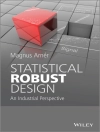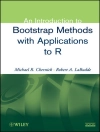A Guide to Sample Size for Animal-based Studies
Understand a foundational area of experimental design with this innovative reference
Animal-based research is an essential part of basic and preclinical research, but poses a unique set of experimental design challenges. The most important of these are the 3Rs – Replacement, Reduction and Refinement – the principles comprising the ethical framework for humane animal-based studies. However, many researchers have difficulty navigating the design trade-offs necessary to simultaneously minimize animal use, and produce scientific information that is both rigorous and reliable.
A Guide to Sample Size for Animal-based Studies meets this need with a thorough, accessible reference work to the subject. This book provides a straightforward systematic approach to ‘rightsizing’ animal-based experiments, with sample size estimates based on the fundamentals of statistical thinking: structured research questions, variation control and appropriate design of experiments. The result is a much-needed guide to planning animal-based experiments to ensure scientifically valid and reliable results.
This book offers:
* Step-by-step guidance in diverse methods for approximating and refining sample size
* Detailed treatment of research topics specific to animal-based research, including pilot, feasibility and proof-of-concept studies
* Sample size approximation methods for different types of data – binary, continuous, ordinal, time to event – and different study types – description, comparison, nested designs, reference interval construction and dose-response studies
* Numerous worked examples, using real data from published papers, together with SAS and R code
A Guide to Sample Size for Animal-based Studies is a must-have reference for preclinical and veterinary researchers, as well as ethical oversight committees and policymakers.
Daftar Isi
Preface vii
Acknowledgements viii
Part I. What is Sample Size?
1 The Sample Size Problem in Animal-Based Research 3
2 Sample Size Basics 9
3 Ten Strategies to Increase Information (and Reduce Sample Size) 17
Part II. Sample Size for Feasibility and Pilot Studies
4 Why Pilot Studies? 35
5 Operational Pilot Studies: ‘Can It Work?’ 47
6 Empirical and Translational Pilots 57
7 Feasibility Calculations: Arithmetic 81
8 Feasibility: Counting Subjects 89
Part III. Sample Size for Description
9 Descriptions and Summaries 103
10 Confidence Intervals and Precision 111
11 Prediction Intervals 127
12 Tolerance Intervals 133
13 Reference Intervals 143
Part IV. Sample Size for Comparison
14 Sample Size and Hypothesis Testing 155
15 A Bestiary of Effect Sizes 167
16 Comparing Two Groups: Continuous Outcomes 181
17 Comparing Two Groups: Proportions 189
18 Time-to-Event (Survival) Data 199
19 Comparing Multiple Factors 211
20 Hierarchical or Nested Data 233
21 Ordinal Data 249
22 Dose-Response Studies 257
Index 267
Tentang Penulis
Penny S. Reynolds, Ph D, is a Research Assistant Professor in the Department of Anesthesiology, College of Medicine, and Department of Small Animal Clinical Sciences, College of Veterinary Medicine, University of Florida, USA.












